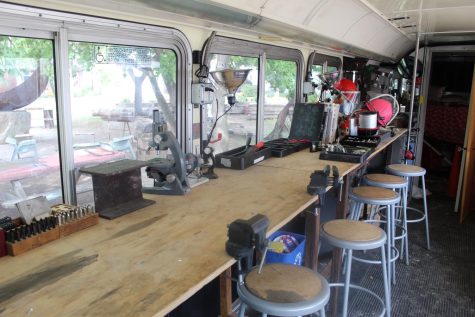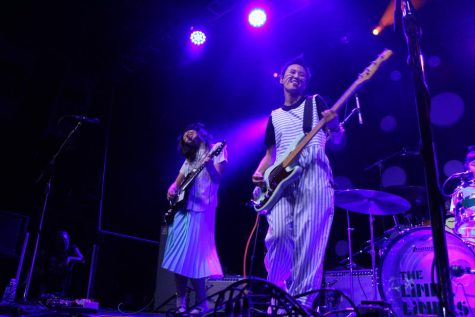Posted on 29 September 2022.
In an interview with the Minnesota Daily on Tuesday, University of Minnesota President Joan Gabel addressed the launch of Dinkytown Alerts and the Sept. 21 bomb threat at Coffman Union.
Gabel also broke down her biennial budget proposal, current updates on the University of Minnesota Police Department (UMPD) and how the University is addressing COVID-19 this semester.
Amidst increasing concerns of crime in the neighborhoods surrounding campus, the University announced Dinkytown alerts to help inform students about crime in the area. How is this different from other actions the University has taken in the past? How do you think it will impact the safety of students?
“The challenge that we’ve had with the increase in crime in adjacent neighborhoods is that they feel like campus, but they are not our technical jurisdiction and that affects where we would deploy UMPD…We’re trying to meet our community where they are within our constrained resources and jurisdictional limitations. Dinkytown Alerts is a new way for us to do that.
It is a service that we are offering because we’ve been asked to by students, but also by faculty, staff and parents. It is dependent upon us receiving notification from the City of Minneapolis about what’s going on. We’re very committed to this comprehensive approach to information so that anyone in the adjacent neighborhood might find themselves having full information and can make their decisions accordingly.”
At the September Board of Regents meeting, UMPD Chief Matt Clark informed the board that 50 of the 65 potential positions on UMPD are currently filled, resulting in strained staffing numbers. He also mentioned this weakens the department’s ability to address crime off campus, where many students reside. How does the University plan to alleviate concerns of crime off-campus, aside from Dinkytown Alerts?
“UMPD staffing is historically around 51 [officers]. We recently approved an increase to 65. So while our staffing numbers are down, it’s important to know that 65 was a growth number that we’re working toward. Part of the reason why we need extra police officers is because we have committed to supporting other law enforcement agencies in the surrounding neighborhoods.
Before we saw this uptick in crime, UMPD would have been ready to assist, and now they are on regular patrol in the adjacent neighborhoods. We’re also doing things that have a deterrent effect, increased lighting, which we do in partnership with the city, and also increased blue lights. The last thing we’ve done that we think is really important is we’ve hired community safety ambassadors, and we’re in the process of hiring more. We also hired a social worker, and so those are unarmed members of the police department who help with information and respond to calls that may not be an emergency, but that are still very important.”
Last May, the campus mask requirement was lifted and since then, other campus COVID-19 policies have been loosened. Do you think students should still be concerned about COVID-19 now that many of these restrictions have been lifted? Does the University have a formalized plan in place if we see a spike in COVID-19 cases in the future? If so, what would it look like?
“COVID is a part of our lives, there are still cases and it is still mutating. I do think that students should be concerned and careful. But as the virus mutates, and as we get better with vaccines, the way in which it restricts our lives diminishes. The decisions we’ve made around masking reflect where the risk lies, it’s all based on data and alignment with state and federal public health guidance.
Things look quite good from a data point of view, but if things increase again, the way all of that works is through what we call the Emergency Management Policy Committee, which is, as the name indicates, in policy to be impaneled when we reach a state of emergency. We are still tracking data, we’re still monitoring guidance, and if the circumstances change, we will pivot like we have all along.”
At the last Board meeting you presented your biennial budget request that will put funds toward things including Promise Program scholarships and public safety at the University. How did you decide to allocate funding to these programs? Do you plan on making amends to the request after hearing what the regents had to say about it? If so, in what ways?
“We have not amended the budget request. The process of preparing a budget is a highly consultative process. We talked to student government leadership, staff leadership, faculty leadership, the senior leadership team of the University, the chancellors from the campuses across the system and the Board.
It reflects inflation, which is hitting us all really hard. We generally seek support from the state in the places where we think the state’s investment most directly benefits the state as a whole. Ultimately, it’s the board’s budget, and they can amend before they vote to approve, and we would obviously work with whatever the collective wisdom of the board suggests that we bring to the state.”
Vice Chair of the Board Steve Sviggum expressed concern about the cost of your proposed biennial budget and how it may lead to increases in student tuition due to poor cost savings. Do you believe that this is a possible outcome? Have you considered the possibility of increased tuition, and if so, do you have a plan to address it?
“What I heard from Regent Sviggum during the meeting was that if the state doesn’t provide the support to meet all of these costs, his back of the napkin calculation was a big increase in tuition. We’re very committed to keeping tuition low. Over the course of the last 10 years, the average tuition increase has been a percent and a half, and three of those 10 years had no tuition increase at all.
So that’s not to say that tuition is not a huge financial burden. But I do see costs going up. And we only have so many ways of addressing those cost increases. So we’re very hopeful that the state will support our request, that will help a lot in keeping tuition as low as possible.”
On Sept. 21, Coffman Union was evacuated for about two hours after receiving a bomb threat. What do you think of the situation? How do you think the University handled it?
“I’m very grateful to UMPD; I think they handled it very well. All appropriate emergency response steps were taken, a lot of very clear communication occurred. It doesn’t mean that people were not distressed as a result of it. The fact that had happened in the first place is very upsetting and very unsettling. I hope that the person involved is getting assistance, and I’m very sorry that it scared our community the way that it did.”


